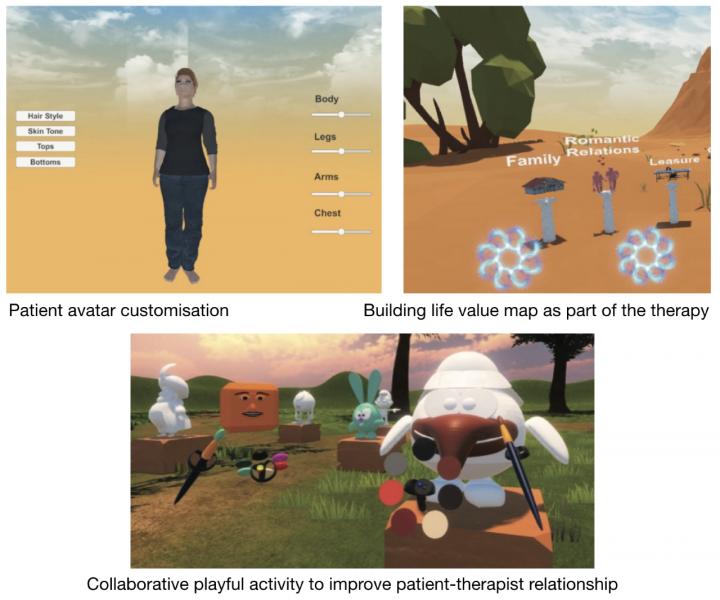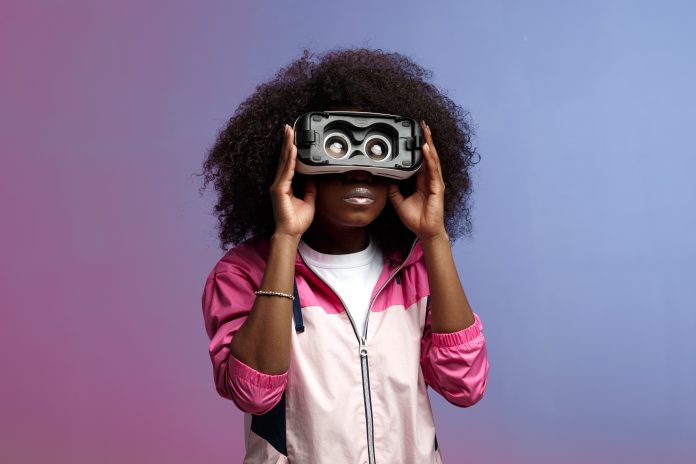Researchers found that Virtual Reality Exposure Therapy (VRET) could significantly help people suffering from eating disorders
In VRET, an individual is immersed in a computer-generated virtual environment. This environment can be programmed to help the person directly confront feared situations or locations that may not be safe to encounter in real life. Through this creation of a secondary world, both the therapist and the patient can explore situations that they feel unable to explore in their lived realities. For example, the use of VRET has been examined as a method for War Veterans with PTSD and people with severe anxiety issues.
In 2007, the use of VRET as a way to aid the elderly overcome a fear of falling was also explored. In 2011, three researchers at York University proposed an affordable virtual reality exposure therapy (VRET) system for the treatment of phobias that could function from home.
This paper, written by researchers at The University of Kent, RISE Ltd and the University of Cyprus, demonstrates the potential of Multi-User Virtual Reality (MUVR) remote psychotherapy for those with body shape and weight concerns.
The ‘Mirror Exposure’ technique
In the study, published in Human-Computer Interaction Journal, participants and therapists were fitted with VR Head-Mounted Displays and introduced to each other within the VR system. Participant would then customise their virtual avatar according to their look (body shape and size, skin tone and hair colour and shape). Participant and therapist were then “teleported” to two Virtual Environment interventions for several discussions, building up to the Mirror Exposure.

Mirror Exposure involves confrontation in a mirror with ones’ shape and body. In the MUVR, the participant faces the virtual avatar they customized to match their own physical body. Here, they were again able to adjust body shapes using virtual sliders, change clothing, skin tone, as well as hair style and colour. Clothing was then gradually reduced until the participant’s avatar was in their virtual underwear.
The participant was then asked to examine each part of their body and perform adjustments while describing their feelings, thoughts and concerns with the therapist, leading to virtual exposure therapy for the patient to their body shape and size through the customised avatar.
Dr Maria Matsangidou, Research Associate at RISE Ltd and Experimental Researcher of the study said:
“Multi-User Virtual Reality is an innovative medium for psychotherapeutic interventions that allows for the physical separation of therapist and patient, providing thus more ‘comfortable’ openness by the patients.
“Exposure to patient worries about body shape and size may exhibit anxious reactions, but through the remote exposure therapy this can elicit new learning that helps the patient to shape new experiences.”
What do patients think?
The study found that the avatar of the therapist was vital to the participant. The cartoonish avatar facilitated greater openness from participants, whilst therapist avatars in human-form represented the idea of negative judgement. The use of a cartoonish cube to represent the therapist enabled the patient to feel a sense of openness, which then enhanced a “feeling of trust” and encouraged a “positive relationship”.
So it seems that VRET designers should consider the design of the therapist, as much as they consider the design possibilities of the patient. The therapist experience, whether online or not, must consider how a patient feels around the person who is going to help them to handle issues that feel like highly vulnerable territory. Photorealism is out, animated cartoon-like elements are in.
Dr Jim Ang, Senior Lecturer in Multimedia/Digital Systems and Supervisor of the study said:
“The potential of Virtual Reality being used in addressing health issues with patients, remotely and without the issue of potential judgement, is for VR to be utilised throughout the health sector. Without the issue of judgement, which people can fear in advance of even seeking medical advice, VR can give people the confidence to engage with and embrace medical advice.
“In terms of the technical capabilities, the potential for VR to aid in remote non-contact medical appointments between patients and practitioners is huge, due particular consideration in times of pandemic.”











